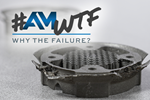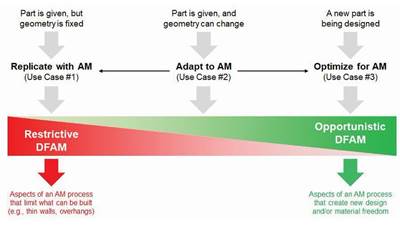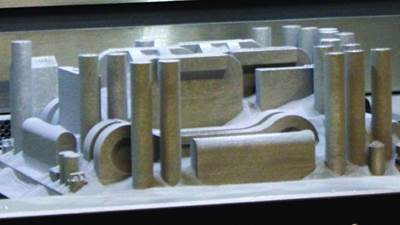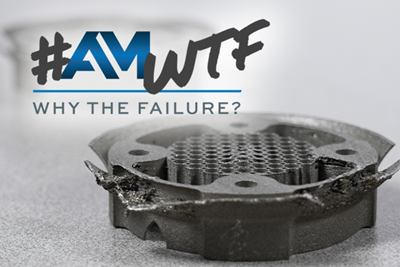AM's Progress: How Far Additive Manufacturing Has Come in 6 Years
Tim Simpson reflects on how additive manufacturing has progressed since he began his column six years ago. Standards and software are two examples.
Editor’s note: For six years, Tim Simpson has written a monthly column appearing in both Modern Machine Shop (MMS) magazine and here on Additive Manufacturing Media. That regular column is ending, and in MMS this installment appears under the title, “A Fond Farewell to My Additive Friends!” We chose a different title here because Tim’s work with us will continue. Listen for him on upcoming episodes of the AM Radio podcast and meet him in person when he leads our Design for Additive Manufacturing track at Formnext Forum Austin.
As they say, all good things must come to an end, and so it is for my column—but not for AM (additive manufacturing) by any means. If anything, AM is on more solid footing now than it was six years ago when I wrote my first column, and its future looks brighter than ever.
The changes over the last six years have been remarkable. AM systems are bigger and faster, and prices on machines and materials continue to fall. Reliability and repeatability have improved dramatically given all that has been learned about the process physics underpinning the different technologies. We can now model and simulate AM processes to help optimize process parameters faster and reduce the likelihood of build failures, saving companies hundreds of thousands of dollars, if not more, during ramp up to additive production.
Meanwhile, interest in topology optimization tools and generative design software continues to increase given the ability to optimize and lightweight components with AM. Established software providers are investing in their computer-aided design (CAD) and computer-aided engineering (CAE) tools like never before, and dozens of new startups have emerged to provide new design capabilities and tools, many of which have already been acquired and integrated into existing software to improve the digital workflow that underpins AM.

Me and my 3D printed replica from Doob-3D. The 3D printed replica is made from my “digital twin” which was created using full-body 3D imaging technology. Photo Credit: Tim Simpson
While new software tools for design abound, the future is full of potential for AM materials. As our understanding of the process physics has improved, so has our ability to design and tailor alloys, microstructures and properties to different applications. The ability to process multiple materials at once to vary alloy composition and functionally grade an AM component opens up entirely new realms for designers to engineer superior parts and products. The material freedoms of AM have long been overshadowed by the focus on design freedom, but that is certain to change in the near future.
Standards for AM have also advanced rapidly over the past decade, particularly the last few years—an unexpected benefit for the pandemic lockdown. This is great for companies new to AM, but it is easy to get overwhelmed by all of the options that are now available. Thankfully, ANSI and America Makes are pushing another standards coordination effort to identify gaps and ways to harmonize the plethora of standards that have finally been created in response to the demands from industry.
In addition to new standards, requirements documents for AM parts have been publicly released for aerospace materials systems by SAE International and for space flight by NASA. These add to the growing body of regulatory policies and guidance documents that have existed in several fields, including the medical industry which embraced AM early. These not only help boost the confidence for companies new to the game but also strengthen the return on investment that many companies have been anxiously awaiting.
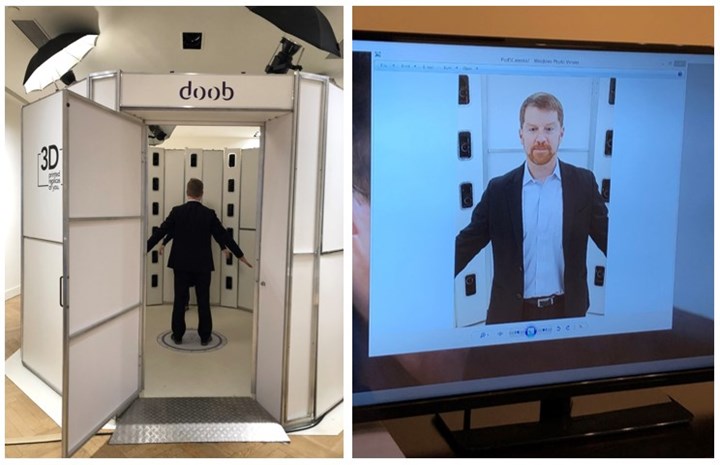
Me getting 3D scanned to create my “digital twin” so that I could be 3D printed. Photo Credit: Tim Simpson
While making a compelling business case for AM may still seem far off for many, companies in nearly every industry have found a way to profit from AM, including metals. Medical implants have been transformed by AM, following suit behind hearing aids, aligners and dental implants. The space industry has fully embraced AM and is pushing the boundaries on performance and productivity faster than most people think possible. Meanwhile, legacy parts for automotive, aerospace and defense applications can now be easily replaced, and many supply chain disruptions can be alleviated with AM. In fact, thanks to the resiliency that AM showed during the pandemic, government programs like AM Forward led by ASTRO America are poised to transform the supply chain and help regionalize manufacturing. This is good for the economy and exciting for the workforce, but the fight for talent will only intensify. Companies will need to invest in their people as well as their products and processes; otherwise, the competitive advantage that AM enables will not materialize if the talent is not there to help.
It is clear that the future of manufacturing will be digital, thanks to AM and other advanced manufacturing technologies that rely so heavily on data. The data being generated during the process is already being harnessed to create “digital twins” that will contribute to the “digital thread” that will tie the “digital workflow” and the “digital factory” together. Artificial intelligence (AI) and machine learning (ML) are poised to assist and will play a critical role in ensuring part quality as companies shift to production with AM and other digital manufacturing technologies.
While this may frighten some of you, I believe the future of manufacturing is brighter than ever before, and I think the machining experts and manufacturing professionals are poised to be the digital pioneers of the future. Will you accept the challenge and take the risk? I hope so!
Thanks all and good luck!
Related Content
ActivArmor Casts and Splints Are Shifting to Point-of-Care 3D Printing
ActivArmor offers individualized, 3D printed casts and splints for various diagnoses. The company is in the process of shifting to point-of-care printing and aims to promote positive healing outcomes and improved hygienics with customized support devices.
Read MoreCopper, New Metal Printing Processes, Upgrades Based on Software and More from Formnext 2023: AM Radio #46
Formnext 2023 showed that additive manufacturing may be maturing, but it is certainly not stagnant. In this episode, we dive into observations around technology enhancements, new processes and materials, robots, sustainability and more trends from the show.
Read More3D Printed Cutting Tool for Large Transmission Part: The Cool Parts Show Bonus
A boring tool that was once 30 kg challenged the performance of the machining center using it. The replacement tool is 11.5 kg, and more efficient as well, thanks to generative design.
Read MoreSolving 3D Printing’s Hidden Problem: Vibration
Ulendo’s vibration compensation software can double the speed of FFF 3D printers while maintaining part quality, all without changing the machine’s hardware.
Read MoreRead Next
AM Enables Manufacturing for Design, Not the Other Way Around
Additive manufacturing allows us to make any shape we want, without having to adapt the design for the manufacturing process.
Read MoreAre AM Parts as Strong as Those Made Conventionally?
An additively manufactured flight-critical helicopter part indicates that they are.
Read MoreSupport Structures and Build Layout Lead to Series of Fails — AM: Why the Failure? #4
A 3D printed piston crown illustrates the iterative path to success often part of laser powder bed fusion additive manufacturing.
Read More



